Regional Convergence, Spatial Scale, and Spatial Dependence:
Evidence from Homicides and Personal Injuries in Colombia 2010-2018
Felipe Santos-Marquez
Master’s student
Graduate School of International Development
Nagoya University, JAPAN
Carlos Mendez
Graduate School of International Development
Nagoya University, JAPAN
Prepared for the 2020 Bolivian Conference on Development Economics July 27th
[ Working paper available at: https://felipe-santos.rbind.io/]
Motivation:
Beyond GDP, socio-economic variables and their convergence are relevant for development studies (Royuela et al 2015)
Persistent income differences, differences in health indicators and in "general" regional inequality in Colombia.
Scarce academic literature on convergence at the municipal level.
Research Objective:
Study convergence/divergence of homicide rates (NMR) and personal injury rates (NPIR) across municipalities and departments in Colombia over 2010-2018.
Analyze spatial autocorrelation and its robustness at different disaggregation levels.
Methods:
Classical convergence framework (Barro and Sala-i-Martin 1992)
Distributional convergence framework (Quah 1996; Hyndman et. al 1996)
Spatial convergence (spatial lag and spatial error models)
Spatial autocorrelation (Moran's I and differential Moran's I)
Main Results:
Sigma Convergence for both homicide and personal injury rates at the state level, Beta Convergence for both levels and rates.
Clustering dynamics
- NMR State level: 4+? convergence clusters
- NMR Municipal level: 2+? convergence clusters
- NPIR State level: 2 convergence clubs
- NPIR Municipal level: stagnation and 2 convergence clubs
Spatial Autocorrelation robust only at the municipality level
Outline of this presentation
Data description Non crime rates
Global convergence: Using classical summary measures
- Beta convergence
- Sigma convergence
Regional disaggregation:
- Distribution dynamics framework
- Distributional convergence
Global spatial autocorrelation:
- Disaggreagation effects
Policy discussion
- The Colombian National Development Plan 2018-22
Concluding Remarks
(1) Data:
Total number of homicides and personal injuries in Colombia per year from 2010 until 2018 (data taken from the national police).
Data is agreggated at the municipal and departmental levels.
Population census and estimates for states and municipalities (data from the National Bureau of Statistics).
Raw rates computed raw rates=crimes/population
Non crime rates computed NCR=10000−raw rate∗10000
- Survival rates are chosen because positively defined variables are a standard in the convergence literature.
Non-crime variables over time
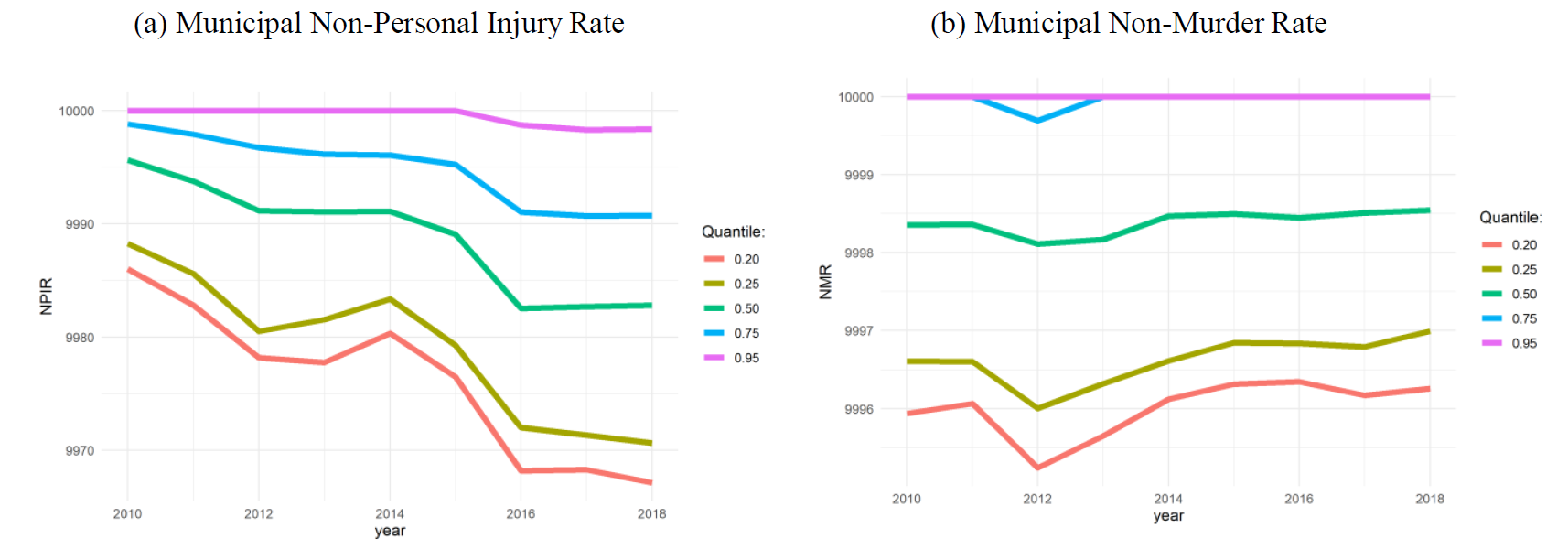
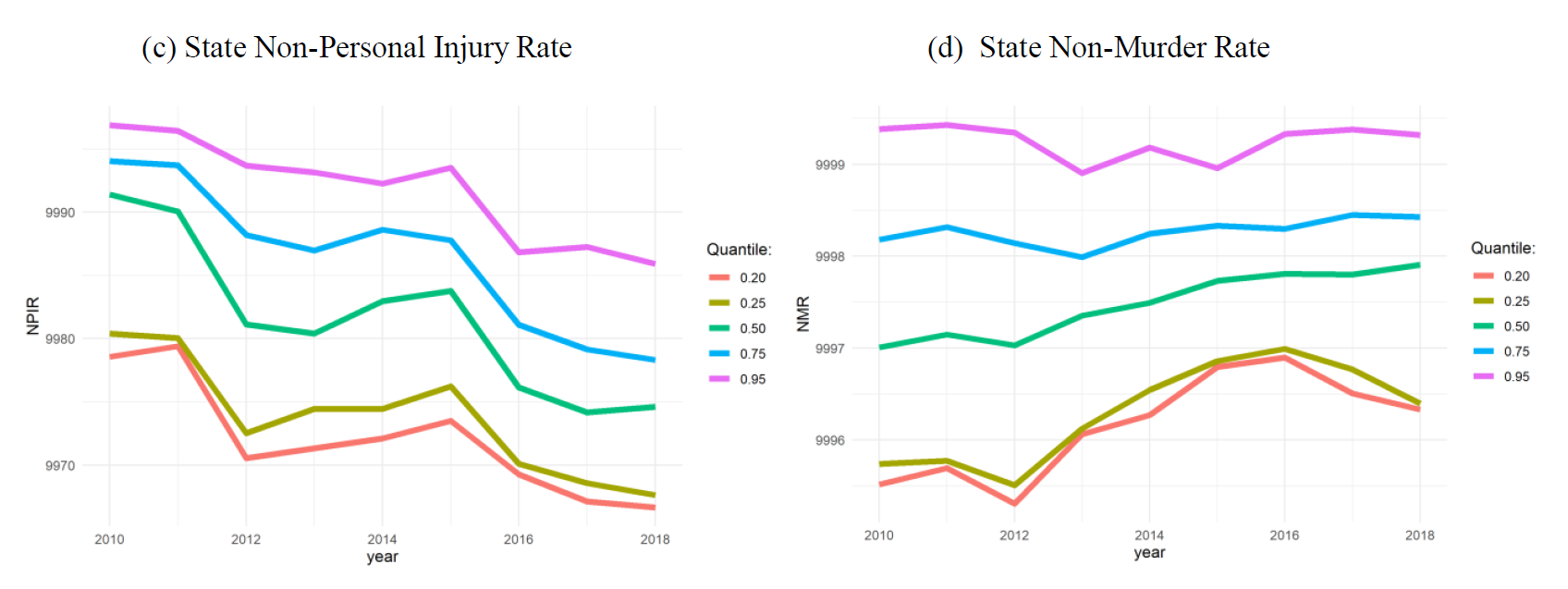
(2) Global convergence:
Beta convergence (catch-up process) logYiTYi0=α+β⋅log(Yi0)+ϵ
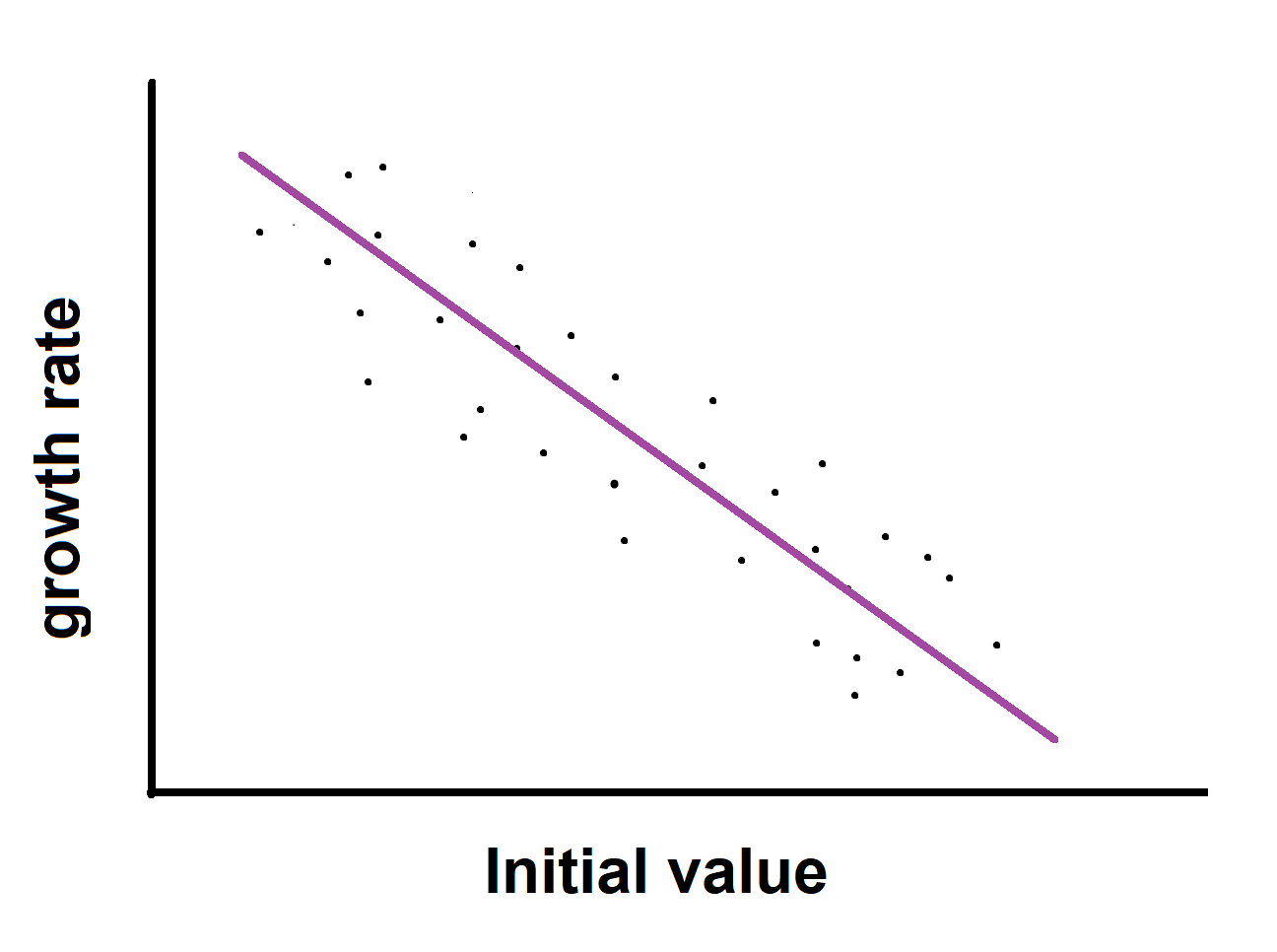
Spatial Beta models
Spatial lag Model: logYiTYi0=α+β⋅log(Yi0)+ρWlogYiTYi0+εt
Spatial Error Model: logYiTYi0=α+β⋅log(Yi0)+λWεt+ut
Sigma convergence (the dispersion of the data decreases over time)
Classical Convergence results (NMR)
States- Sigma and Beta convergence
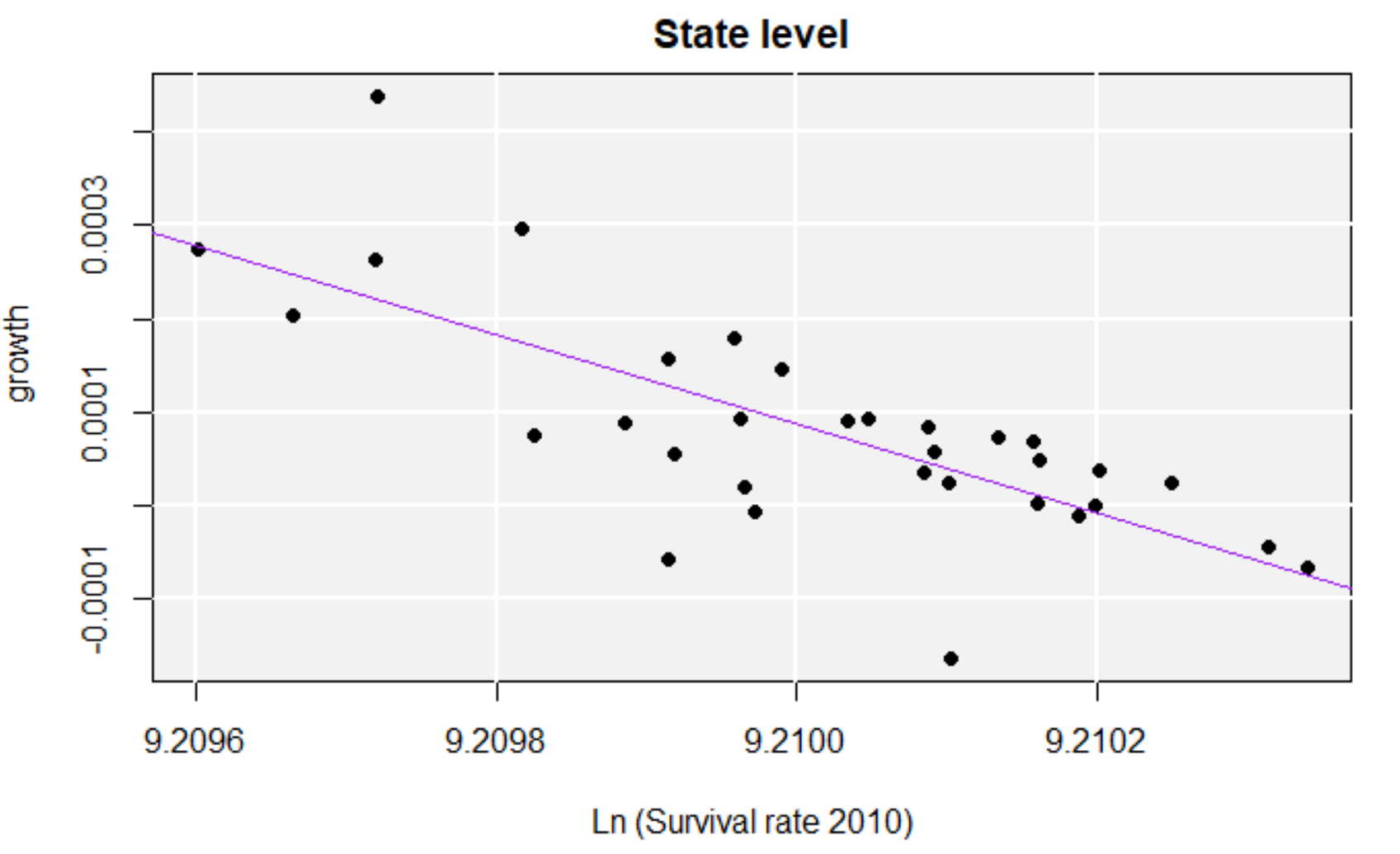
Municipalities - ONLY Beta convergence
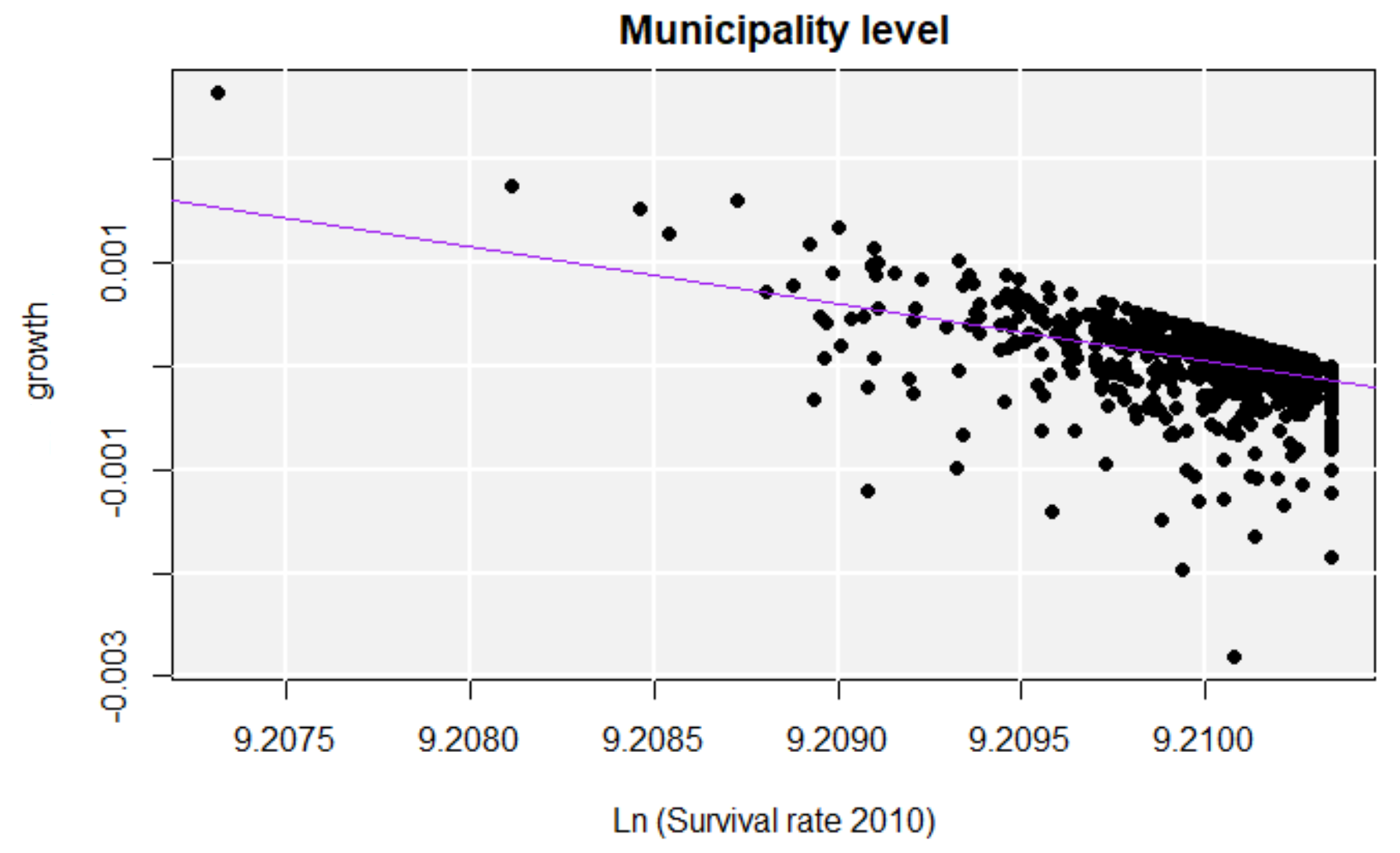
Sigma convergence results
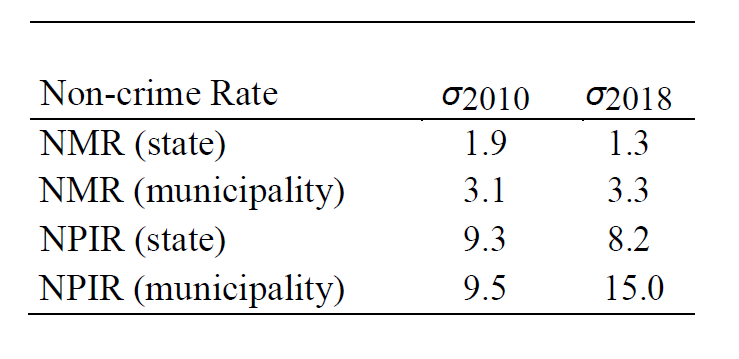
Beta and sigma convergence summary
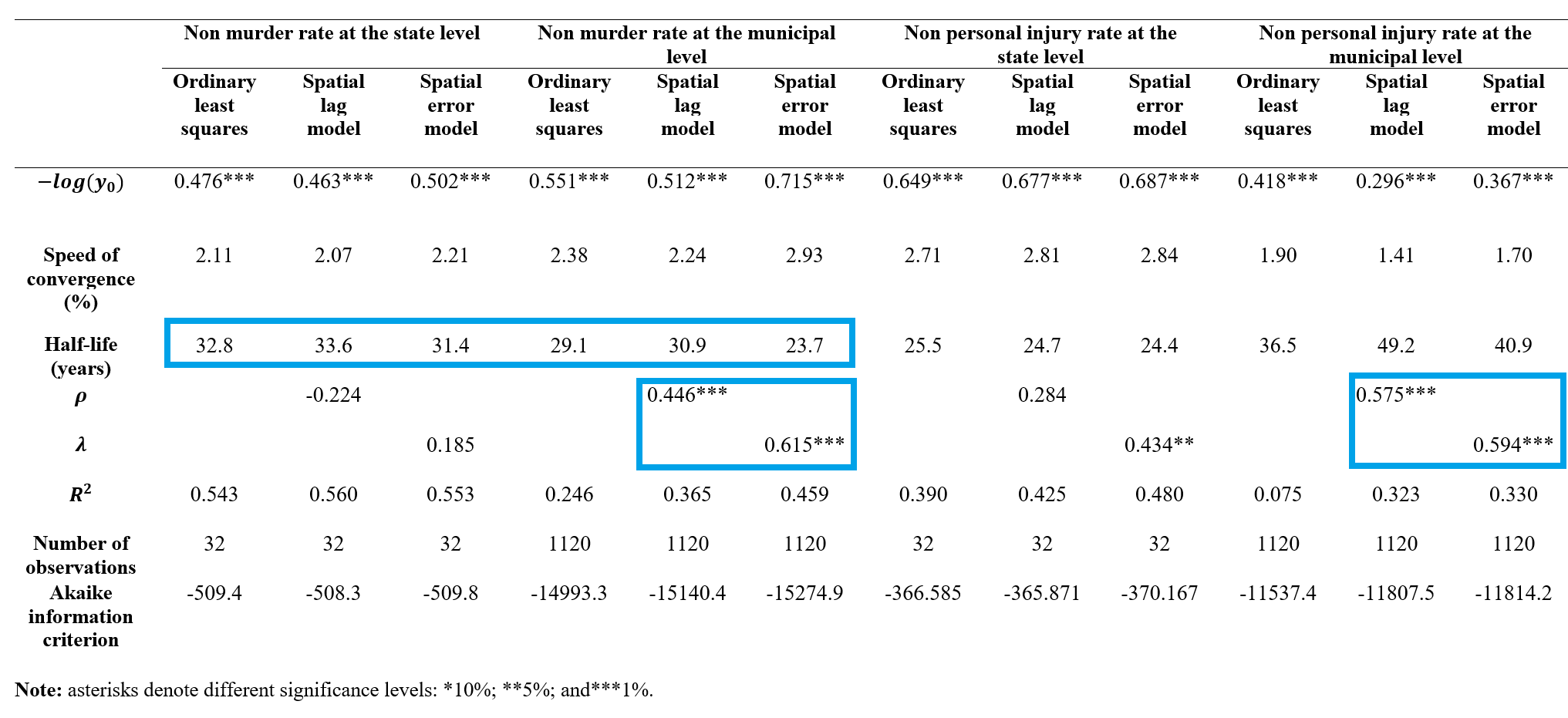
- Lagrange multiplier tests also indicate that the SEM is the best fitting model.
- Royuela and García (2015) also reported that the ρ and λ coefficients were NOT significant at the state level over the period 1990 to 2005.
- The authors reported half-lives of 15.3, 11.5 and 15.8 years.
(3) State and Municipality disaggregation:
The distribution dynamics framework
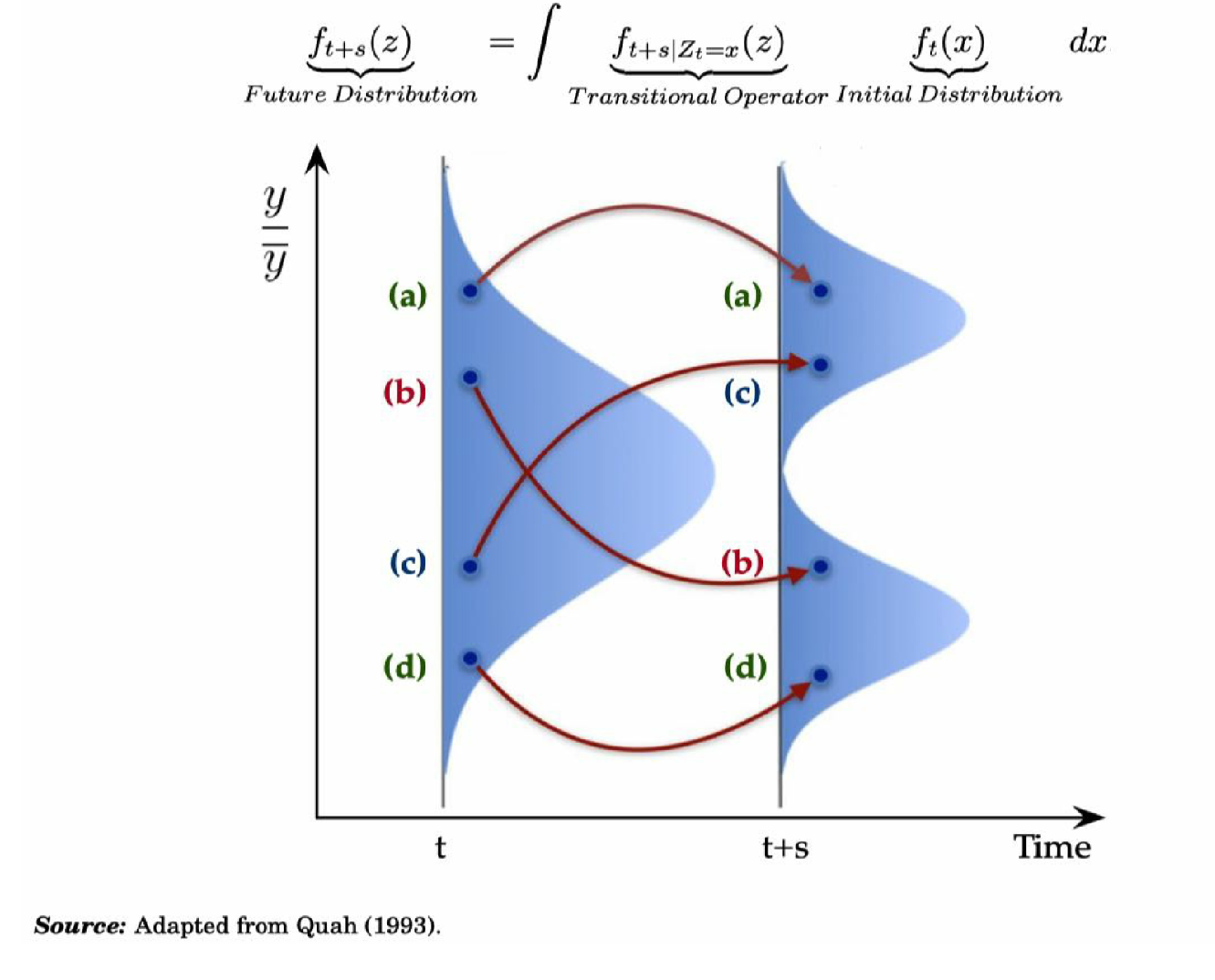
The distribution dynamics framework
Convergence, divergence and stagnation
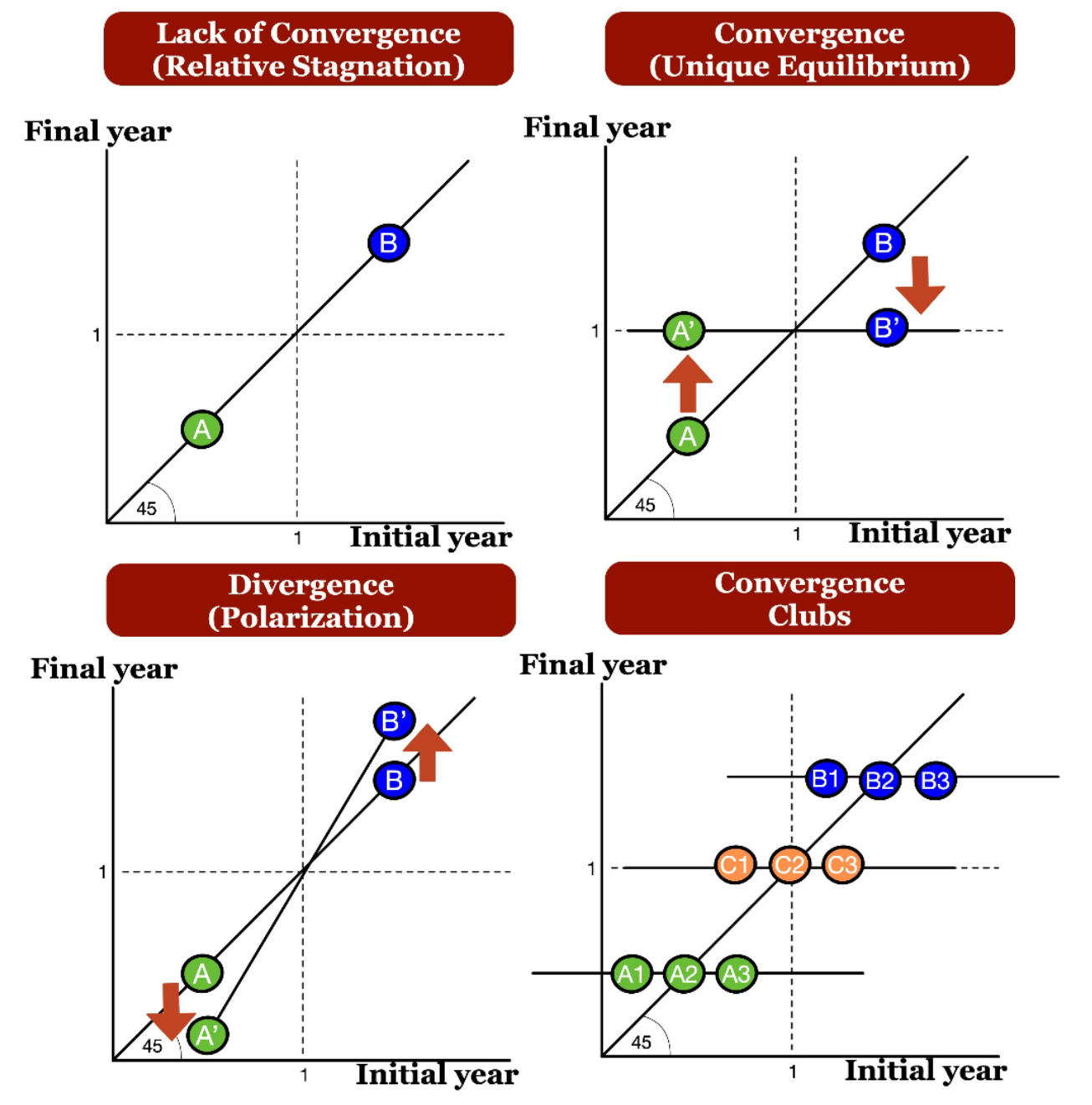
(3) Local convergence clusters
NMR State level: 4+? convergence clusters
NMR Municipal level: 2+? convergence clusters
NPIR State level : 2 convergence clubs
NPIR Municipal level : stagnation and 2 convergence clubs
NMR at both levels
State level: 4+? convergence clusters
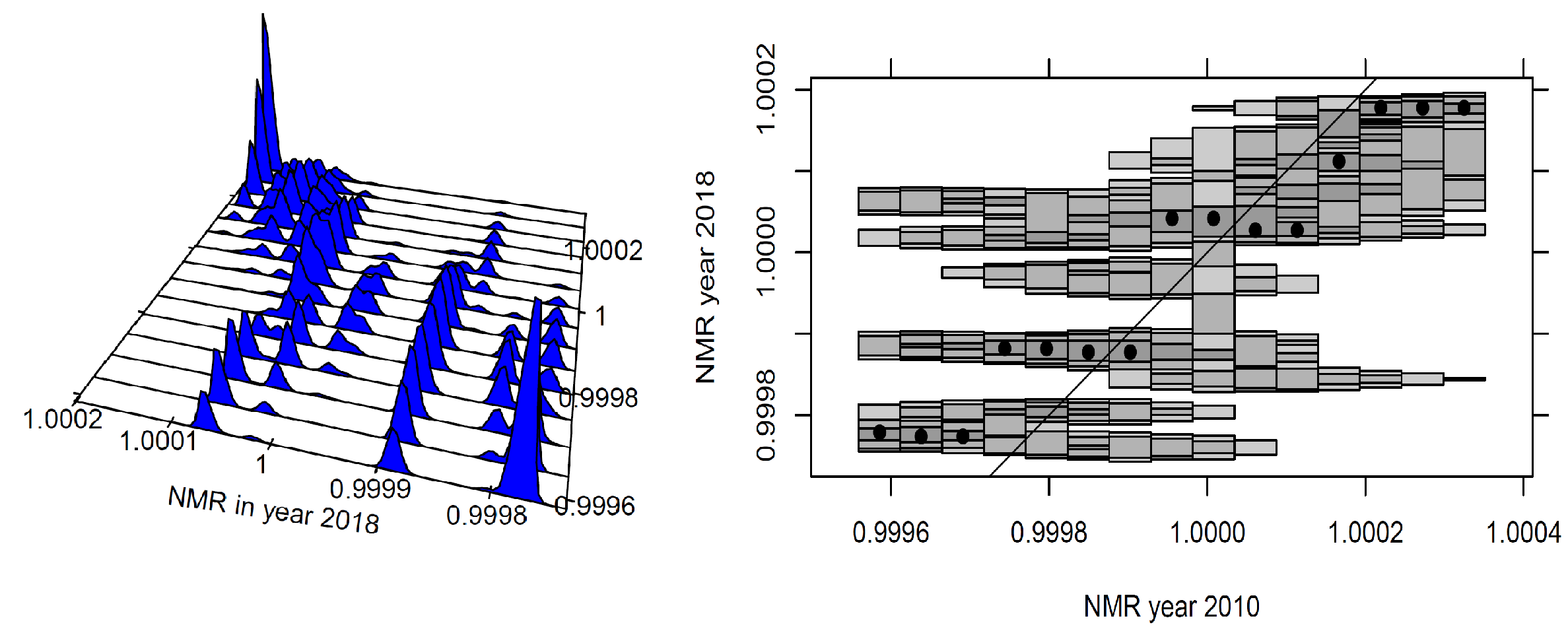
Municipal level: 2+? convergence clusters
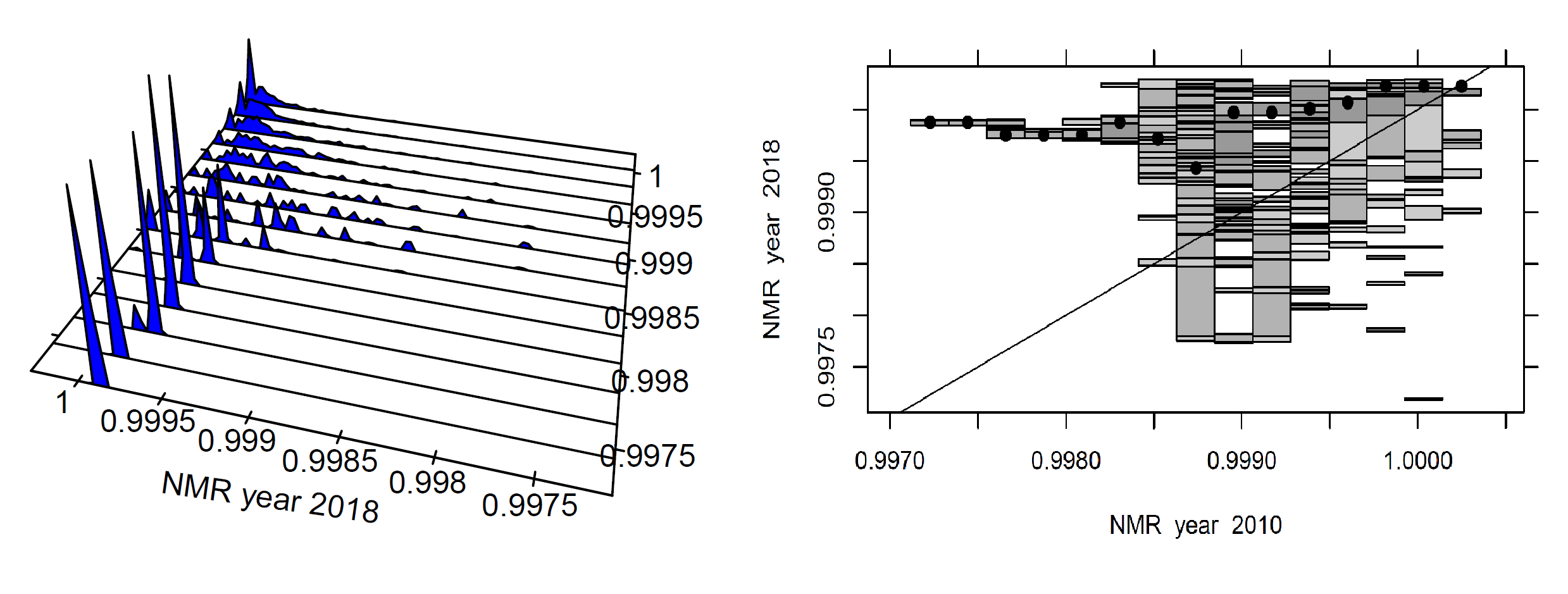
At the municipal level there are fewer clusters but no signs of sigma convergence
NPIR at both levels
State level: 2 convergence clusters
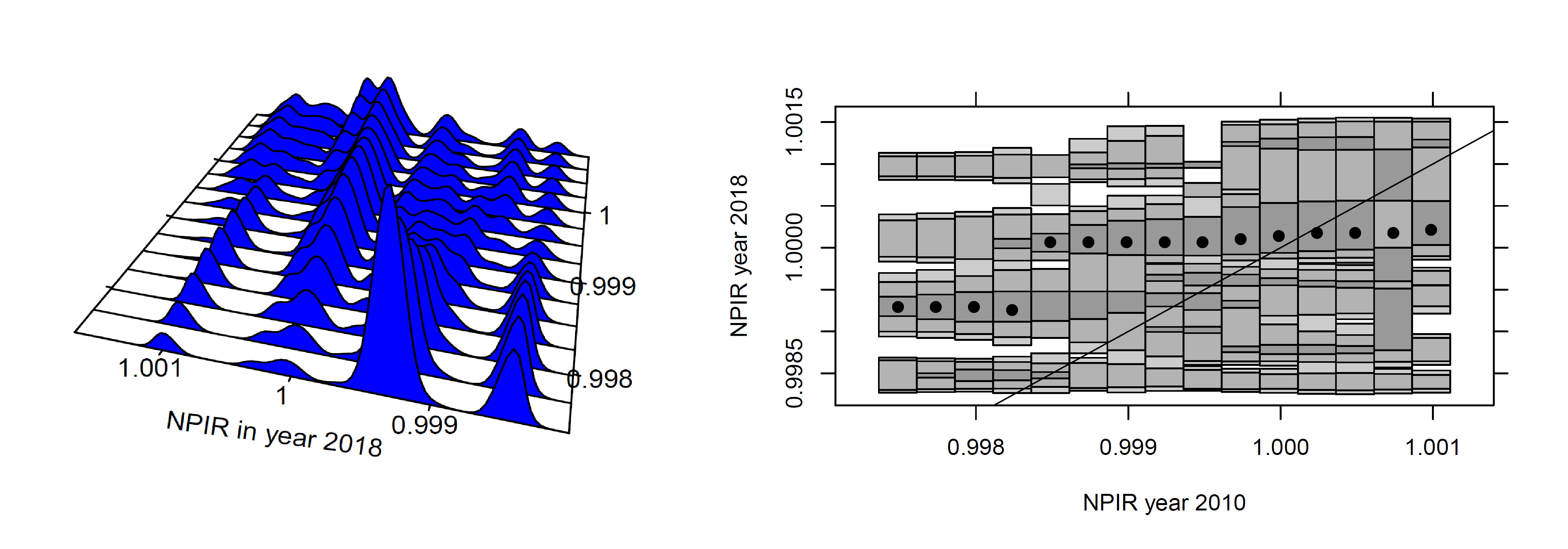
Municipal level: 2 convergence clusters and stagnation
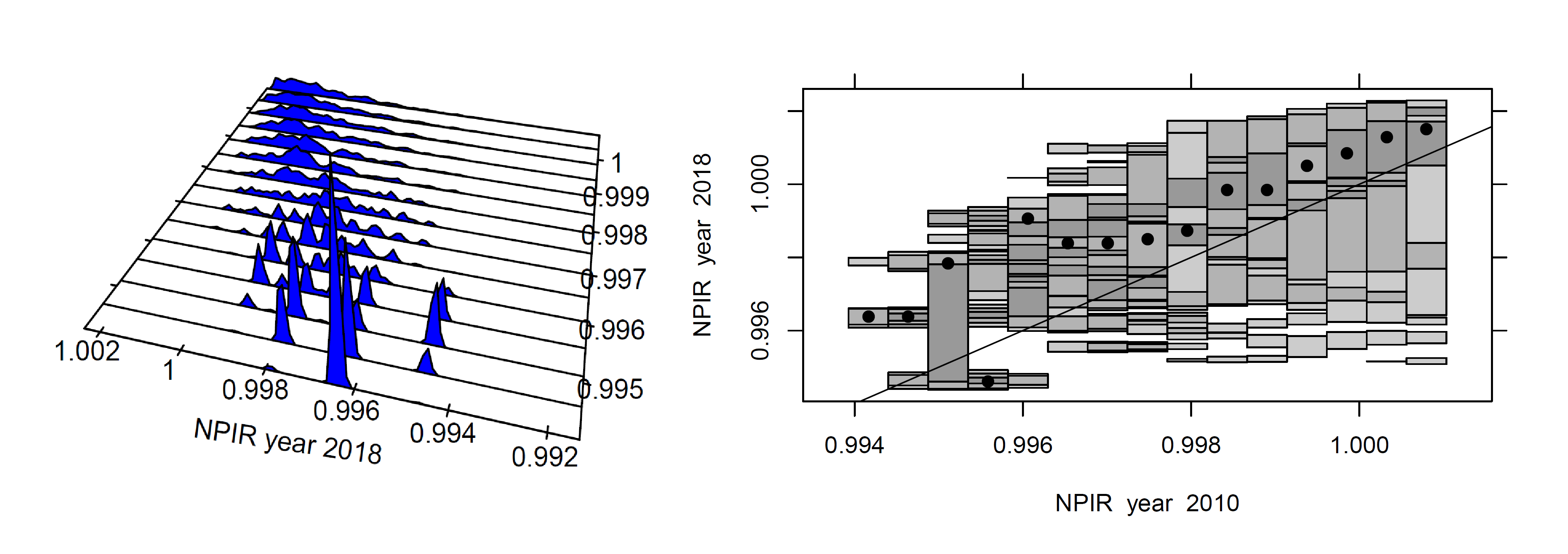
the same number of clusters but stagnation patterns are strong at the municipal level.
(4) Spatial Autocorrelation (Theory)
High Intuition Concept
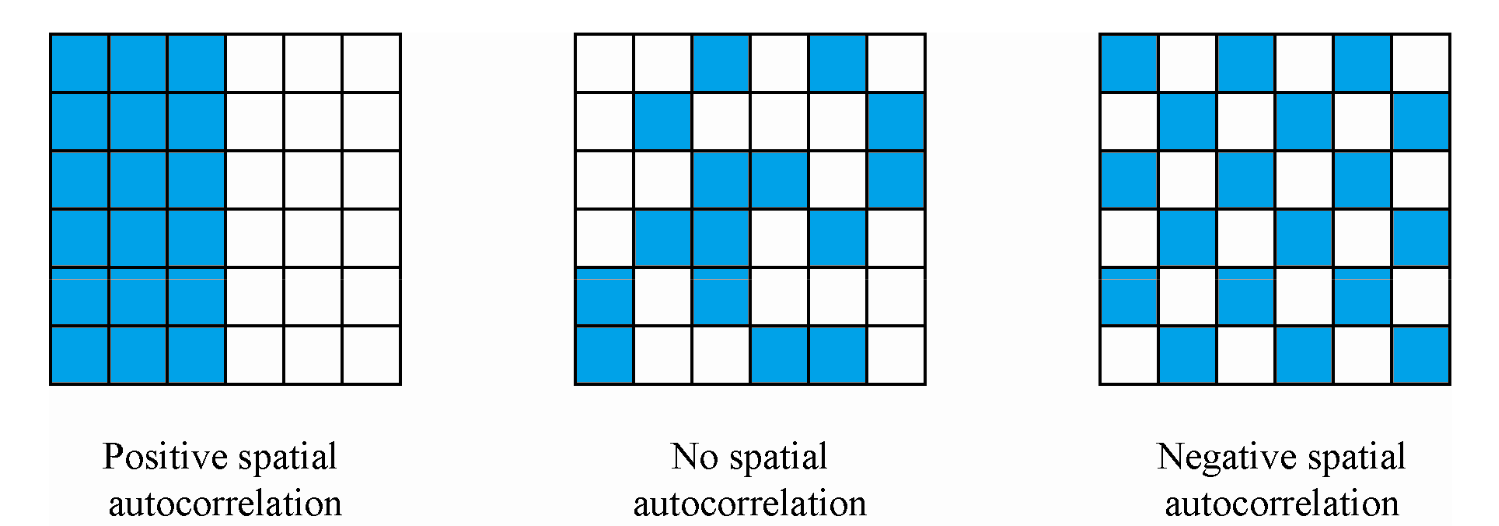
More Formal (less intuitive)
I=∑i∑jwijyi.yj∑iy2i=∑i(yi×∑jwijyj)∑iy2i.
Differential Moran's I ( yi,t−yi,t−1 )
We compute the Moran's I for the variable yi,t−yi,t−1.
If there is a fixed effect μi related to location i, it is possible to present the value at each location for time t as the sum of some intrinsic value and the fixed effect. yi,t=y∗i,t+μi
(4) Spatial autocorrelation (Results)
State level: Moran's I statistic is significant, differential Moran's I is not significant (not robust)
Municipal level: Standard and Differential Moran's I significant (robust)
- Space matters at the Municipal level
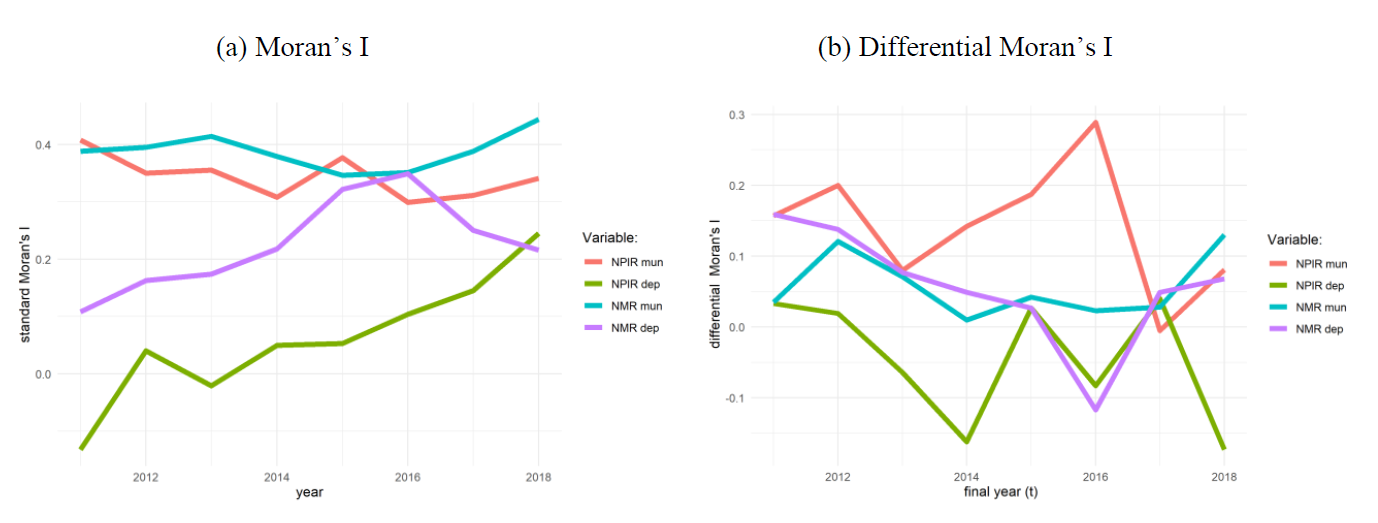
(5) Policy discussion
Vertical and horizontal policy coordination, spillovers and borders.
Spatial spillovers from neighbors can have both positive and negative effects on the convergence path of a region.
It could be more appropriate for the formulation of national development plans to have targets at the state level
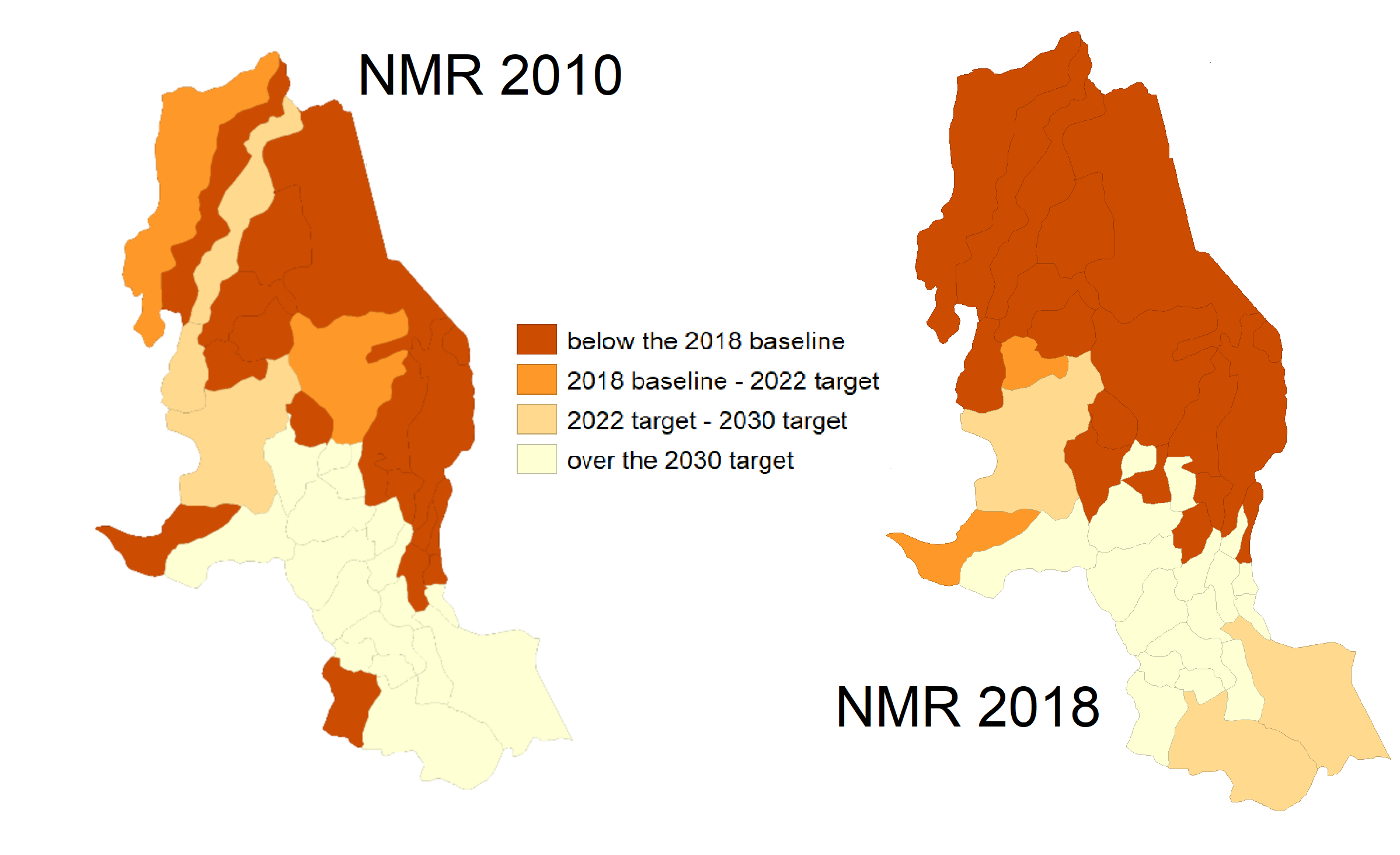
(5) Concluding Remarks
Uplifting results "on average" :
The dispersion of non-crime (crime) rates at the state level has decreased. On average less homicides but more personal injuries.
Global convergence on average at the state level, while fast beta convergence at the municipality level.
Beyond classical convergence :
Regional differences matter in both disaggregation levels.
Multiple local convergence clubs; with more clubs at the state level.
The Role of Space
Subsequent Differential Moran's I are robust and significant at the municipality level only
Results at the state level for NMR are not conclusive and similar to the ones reported by Royuela et al 2015.
(5) Concluding Remarks
Implications and further research
Convergence clusters help us to find regions with similar outcomes, coordination among them can be promoted.
Strong spatial autocorrelation suggest the possibility of applying spatial filters in order to remove the spatial component of crime variables.
At the state level (including more variables) a probit model may help us to find the determinants for a conditional "jump" to the upper clusters.
As many municipalities have small population, crime rates have high variance instability. Empirical Bayes methods can be used.
Thank you very much for your attention
You can find the working paper on my website https://felipe-santos.rbind.io
If you are interested in our research please check our QuaRCS lab website
https://quarcs-lab.rbind.io/

Quantitative Regional and Computational Science Lab